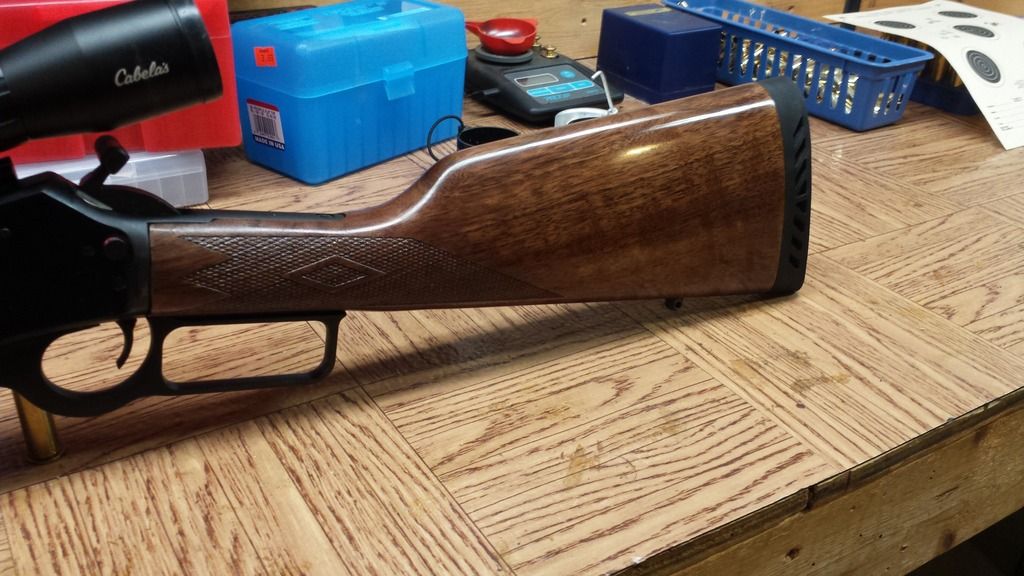droped it when i was showing my cousin and put a small scratch in it...fail.
Easy to fix. You're going to either sand or steel wool the entire stock to finish it anyway. Take some of the Tru Oil and thin it about 5% - you actually want it kind of thick for touching up.
In this instance, I would use VM&P Naptha as the thinner as you don't want to the finish to flow out too much. The naptha evaporates faster than mineral spirits and will allow you to build-up the finish faster.
You can use a small artist's brush or, if you don't have that, take a toothpick and mash the end to make a brush-like end on the toothpick. Carefully fill the scratch and let it dry.
You'll have to repeat the process until the finish is built up past the surrounding surface.
An alternate approach is to sand the entire scratch about 1/2-inch wide back to the wood, and then apply a series of finish coats only to the sanded area to build it up level with the surrounding finish. If you use this approach, thin the oil 10% with naptha and brush it on using a small, quality trim brush. Apply the finish and then "tip" it off (use the brush in one direction with only the tips of the bristles) to break any bubbles that may be in the finish. Let it sit for 24 hours and then wet sand lightly with 400 or 600 grit. Repeat the process until you have the area filled and blended.
Always put a little dish washing liquid in the water (1-2 drops in 1 quart is plenty) to use for sanding. After sanded the area dries, wipe down the entire stock with a clean damp cloth. Then apply the next coat of finish.
You have to wipe the entire stock as you have to get all of the sanding dust and other dust off of the stock before the next coat so you don't drag anything into the new finish.
Either way to repair the crack works, but without seeing the scratch and looking at it carefully it's not possible to tell you the best way to do it via the Internet.
When you have the scratch area built-up slightly above the surrounding surface, use some 1200 grit wet/dry sandpaper and sand the entire stock using the paper wet.
Once you have the stock sanded and the scratch blended, you'll have to figure out how you want to finish the stock. If you want it slightly glossy (satin) finish you could continue with wet/dry paper through 3200 grit. At that point you could buff it with a buffing compound and then wax with a wood paste wax.
Or, after you finish sanding with the 1200 grit, you could simply take #0000 steel wool and buff the entire stock to a matte finish and then wax with a wood paste wax.
If you wanted to add a little more depth to the finish, you could use colored Briwax in either Tudor Brown or Dark Brown. The addition of the colored wax can be used to accent areas on the stock and will give the finish a more 3D appearance.



